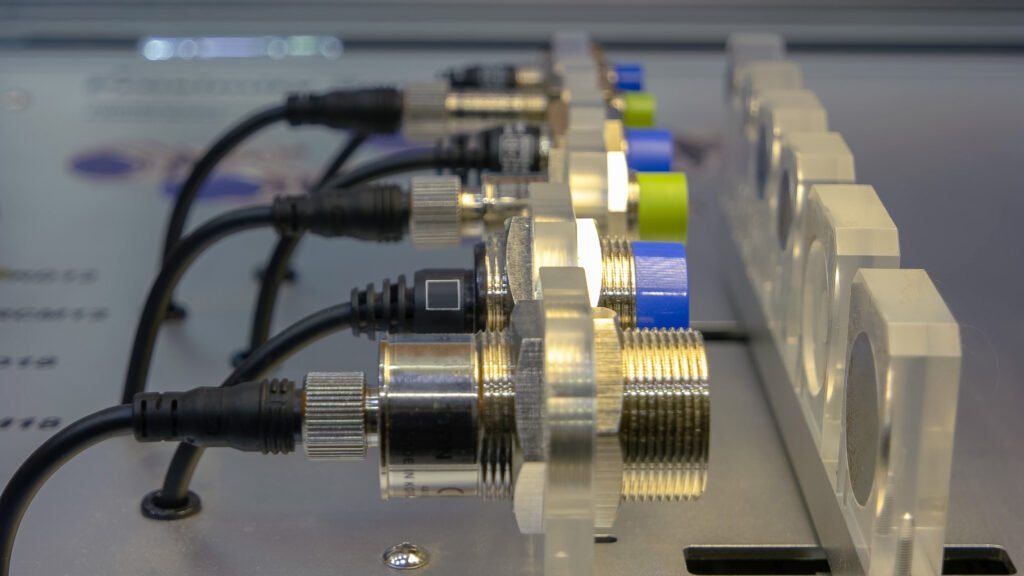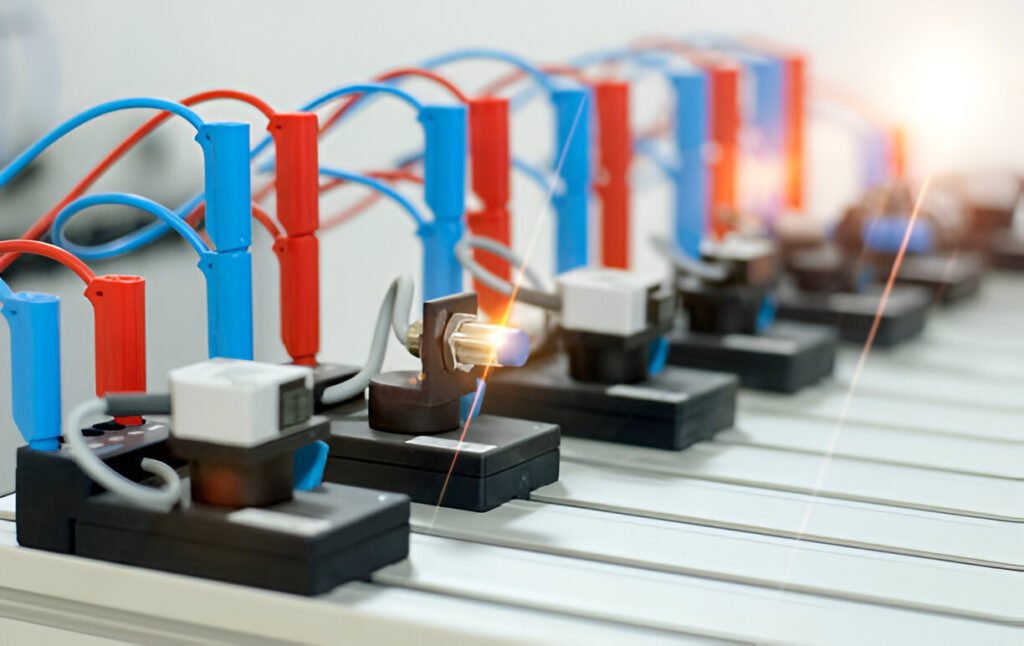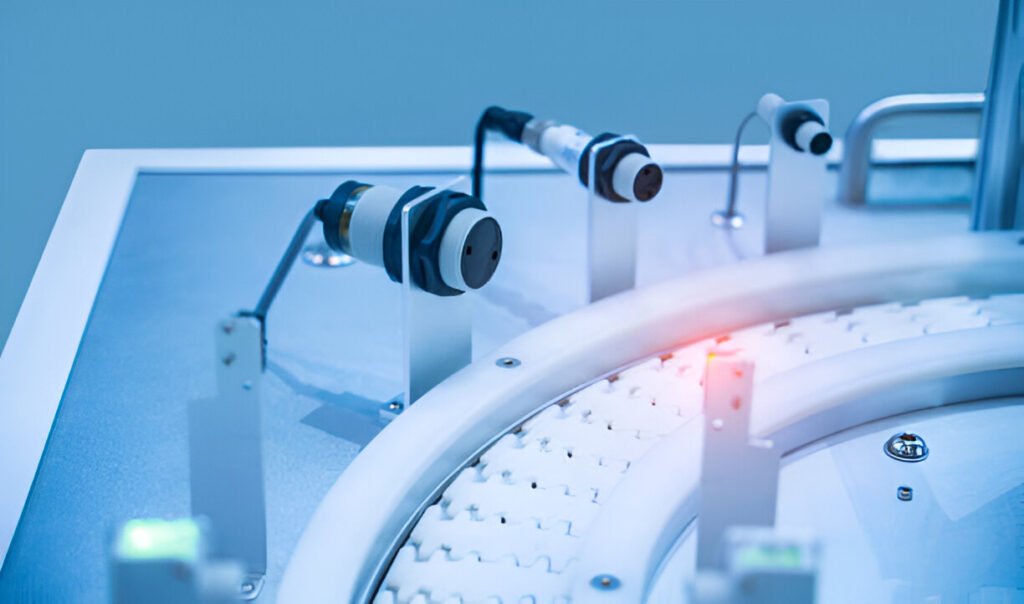Os sensores de proximidade indutivos podem parecer saídos de um filme de ficção científica, mas na verdade são a base da automação moderna. Você já se perguntou como as máquinas "sentem" os objetos sem tocá-los? É aí que essas pequenas maravilhas entram em ação. Neste artigo, vamos nos aprofundar no mundo dos sensores de proximidade indutivos, explicando o que são, como funcionam e por que são tão importantes. Pronto para se tornar um nerd? Vamos lá!
—
O que é uma chave de proximidade indutiva?
Uma chave de proximidade indutiva é um sensor sem contato que detecta objetos metálicos sem interação física. Pense nele como um guardião silencioso que fica de olho nas coisas - literalmente. Ele é amplamente utilizado em automação industrial, robótica e até mesmo em aparelhos de uso diário.
Como funciona um interruptor de proximidade indutivo?
Em sua essência, uma chave de proximidade indutiva usa campos eletromagnéticos para detectar objetos metálicos. Quando um objeto metálico entra em sua faixa de detecção, ele interrompe o campo eletromagnético, acionando a chave. É como um jogo de esconde-esconde, mas com ímãs e metal!
A ciência por trás disso
O interruptor gera um campo magnético oscilante. Quando um objeto de metal entra nesse campo, correntes parasitas são induzidas no objeto, causando uma alteração na oscilação. Essa alteração é detectada pelo switch, que envia um sinal.
Componentes principais de uma chave de proximidade indutiva
Vamos detalhar isso:
1. Oscilador: Gera o campo eletromagnético.
2. Bobina: Cria o campo magnético.
3. Circuito de detecção: Monitora as alterações no campo.
4. Circuito de saída: Envia o sinal quando um objeto é detectado.
Tipos de chaves de proximidade indutivas
Nem todos os sensores de proximidade indutivos são iguais. Aqui estão os principais tipos:
1. Blindado: Ideal para espaços apertados, com uma faixa de detecção focada.
2. Não blindado: Oferece uma faixa de detecção mais ampla, mas requer mais espaço.
3. Alta temperatura: Projetado para ambientes extremos.
Aplicações dos sensores de proximidade indutivos
Esses interruptores estão em toda parte! De correias transportadoras em fábricas a elevadores em edifícios, eles desempenham um papel fundamental na automação. Eles também são usados em:
- Linhas de montagem automotivas
- Máquinas de embalagem
- Robótica
- Sistemas de segurança
Vantagens do uso de chaves de proximidade indutivas
Por que eles são tão populares? Aqui está o motivo:
Operação sem contato
Alta confiabilidade
Tempo de resposta rápido
Limitações dos sensores de proximidade indutivos
No entanto, eles não são perfeitos. Aqui estão algumas desvantagens:
Limitado a metais
Faixa de detecção
Como escolher o interruptor de proximidade indutivo correto
Escolher o switch certo pode ser complicado. Considere:
Faixa de detecção
Meio ambiente
Tipo de saída
Dicas de instalação e manutenção
A instalação de uma chave de proximidade indutiva é simples, mas aqui estão algumas dicas:
Montagem segura
Verificar o alinhamento
Limpeza regular
Tendências futuras na tecnologia de interruptores de proximidade indutivos
O futuro parece brilhante! Esperar:
Miniaturização
Sensores inteligentes
Materiais aprimorados
—
Conclusão
Os sensores de proximidade indutivos são os heróis desconhecidos da automação, facilitando silenciosamente nossas vidas. Seja em uma fábrica, em um carro ou até mesmo em sua casa, esses dispositivos estão em toda parte, fazendo seu trabalho com precisão e confiabilidade. Com o avanço da tecnologia, só podemos esperar que eles se tornem mais inteligentes, menores e mais eficientes. Portanto, da próxima vez que você vir uma máquina detectar um objeto "magicamente", você saberá a ciência por trás disso!
—
Perguntas frequentes
Que materiais os sensores de proximidade indutivos podem detectar?
Os sensores de proximidade indutivos só podem detectar objetos metálicos, como aço, alumínio e cobre.
Os sensores de proximidade indutivos podem funcionar embaixo d'água?
Sim, alguns modelos são projetados para funcionar em ambientes úmidos ou subaquáticos, mas sempre verifique a classificação IP antes de usar.
Quanto tempo duram os sensores de proximidade indutivos?
Sem partes móveis, essas chaves podem durar anos, muitas vezes ultrapassando 100.000 horas de operação.
Posso usar uma chave de proximidade indutiva para objetos não metálicos?
Não, os sensores de proximidade indutivos são projetados especificamente para objetos metálicos. Para a detecção de objetos não metálicos, considere os sensores de proximidade capacitivos.
Qual é a diferença entre chaves de proximidade indutivas blindadas e não blindadas?
As chaves blindadas têm uma faixa de detecção focada e são ideais para espaços apertados, enquanto as chaves não blindadas oferecem uma faixa mais ampla, mas exigem mais espaço de instalação.








